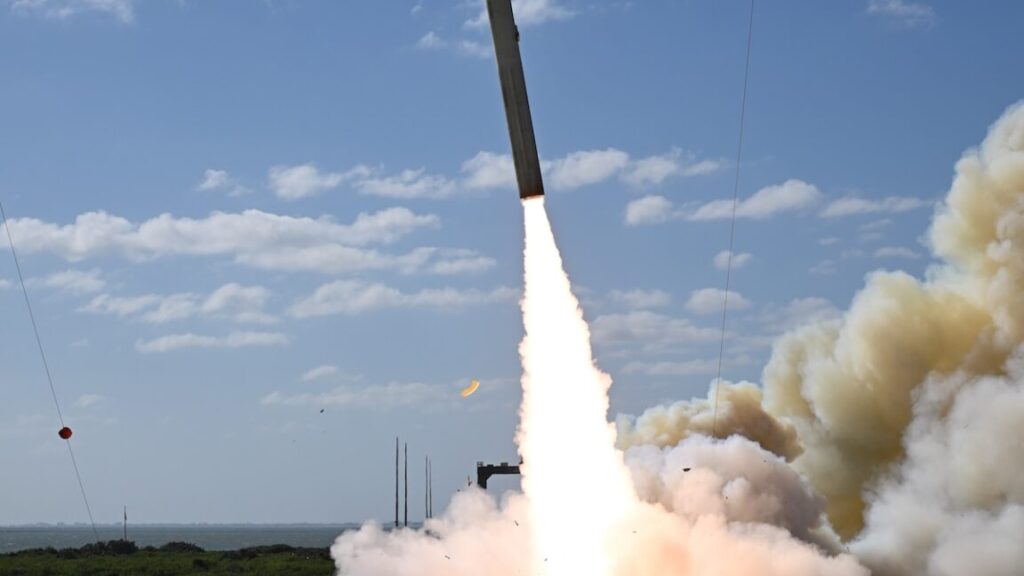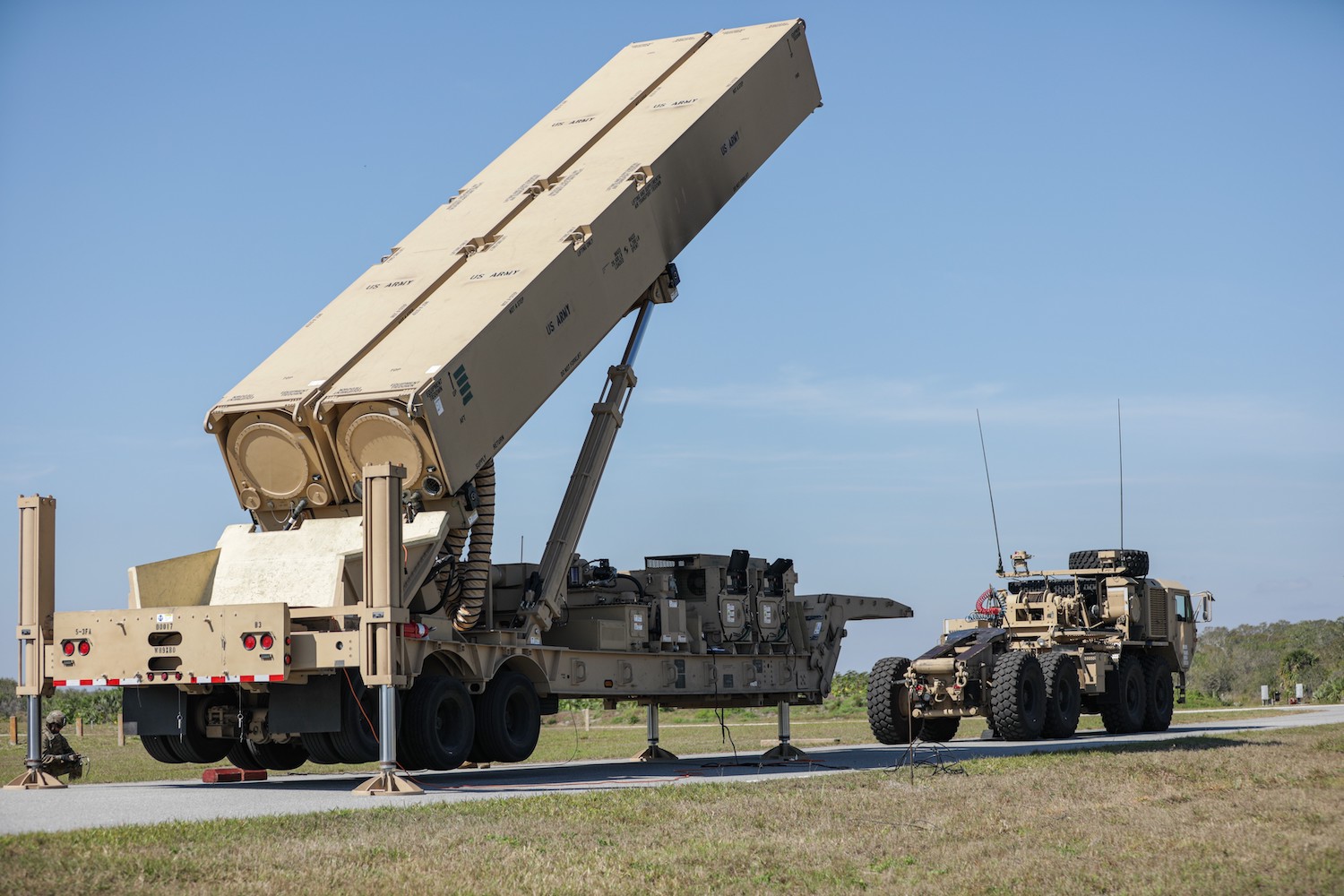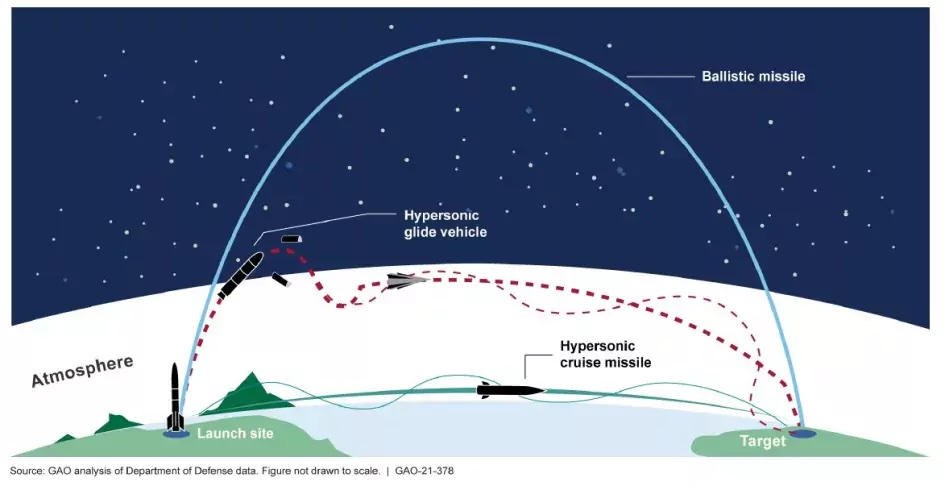Rocket Report: Rocket Lab to demo cargo delivery; America’s new ICBM in trouble
SpaceX’s plan to turn Starbase into Texas’ newest city won the approval of voters—err, employees.
A decommissioned Titan II intercontinental ballistic missile inside a silo at a museum in Green Valley, Arizona.
Welcome to Edition 7.43 of the Rocket Report! There’s been a lot of recent news in hypersonic testing. We cover some of that in this week’s newsletter, but it’s just a taste of the US military’s appetite for fielding its own hypersonic weapons, and conversely, the Pentagon’s emphasis on the detection and destruction of an enemy’s hypersonic missiles. China has already declared its first hypersonic weapons operational, and Russia claims to have them, too. Now, the Pentagon is finally close to placing hypersonic missiles with combat units. Many US rocket companies believe the hypersonics sector is a lucrative business. Some companies have enough confidence in this emerging market—or lack of faith in the traditional space launch market—to pivot entirely toward hypersonics. I’m interested in seeing if their bets pay off.
As always, we welcome reader submissions. If you don’t want to miss an issue, please subscribe using the box below (the form will not appear on AMP-enabled versions of the site). Each report will include information on small-, medium-, and heavy-lift rockets, as well as a quick look ahead at the next three launches on the calendar.

Stratolaunch tests reusable hypersonic rocket plane. Stratolaunch has finally found a use for the world’s largest airplane. Twice in the last five months, the company launched a hypersonic vehicle over the Pacific Ocean, accelerated it to more than five times the speed of sound, and autonomously landed at Vandenberg Space Force Base in California, Ars reports. Stratolaunch used the same Talon-A vehicle for both flights, demonstrating its reusability, a characteristic that sets it apart from competitors. Zachary Krevor, Stratolaunch’s president and CEO, said his team aims to ramp up to monthly flights by the end of the year.
A 21st century X-15 … This is the first time anyone in the United States has flown a reusable hypersonic rocket plane since the last flight of the X-15, the iconic rocket-powered aircraft that pushed the envelope of high-altitude, high-speed flight 60 years ago. Like the Talon-A, the X-15 released from a carrier jet and ignited a rocket engine to soar into the uppermost layers of the atmosphere. But the X-15 had a pilot in command, while the Talon-A flies on autopilot. Stratolaunch is one of several companies participating in a US military program to test parts and technologies for use on future hypersonic weapons. “Why the autonomous flight matters is because hypersonic systems are now pushing the envelope in terms of maneuvering capability, maneuvering beyond what can be done by the human body,” Krevor said.
The easiest way to keep up with Eric Berger’s and Stephen Clark’s reporting on all things space is to sign up for our newsletter. We’ll collect their stories and deliver them straight to your inbox.
New details about another recent hypersonic test. A hypersonic missile test on April 25 validated the launch mechanism for the US Navy Conventional Prompt Strike (CPS) weapon program, the Defense Department said on May 2. The CPS missile, the Navy’s name for what the US Army calls the Long Range Hypersonic Weapon (LRHW), launched from Cape Canaveral Space Force Station, Florida, Aviation Week & Space Technology Reports. While the Army and Navy versions use the same hypersonic glide vehicle and missile, they use different launch mechanisms. Last year, the Army tested its version of the hypersonic missile launcher. Now, the Navy has validated the cold-gas launch mechanism it will install on guided missile destroyers.
Deploying soon … “The cold-gas approach allows the Navy to eject the missile from the platform and achieve a safe distance above the ship prior to first stage ignition,” said Vice Adm Johnny R. Wolfe Jr., director of the Navy’s Strategic Systems Programs, which is the lead designer of the common hypersonic missile. The Army plans to field its Long Range Hypersonic Weapon—also called “Dark Eagle”—with a combat unit later this year, while the Navy’s version won’t be ready for testing at sea until 2027 or 2028. Both missiles are designed for conventional (non-nuclear) strikes. The Army’s Dark Eagle will be the US military’s first operational hypersonic weapon.
Sentinel needs new silos. The Air Force will have to dig entirely new nuclear missile silos for the LGM-35A Sentinel, creating another complication for a troubled program that is already facing future cost and schedule overruns, Defense News reports. The Air Force originally hoped the existing silos that have housed Minuteman III intercontinental ballistic missiles could be adapted to launch Sentinel missiles, which would be more efficient than digging entirely new silos. But a test project at Vandenberg Space Force Base in California showed that approach would be fraught with further problems and cause the program to run even further behind and over budget, the service said.
Rising costs … Sentinel, developed by Northrop Grumman, will replace the Air Force’s fleet of Minuteman III ICBMs, which entered service in 1970, as the land-based leg of the military’s nuclear triad. It was originally expected to cost $77.7 billion, but projected future costs ran so severely over budget that in January 2024, it triggered a review process known as a critical Nunn-McCurdy breach. After that review, the Pentagon last year concluded Sentinel was too critical to national security to abandon, but ordered the Air Force to restructure it to bring its costs under control. Further studies of the program are now showing more potential problems.
Gilmour says it (hopefully) will wait no more. The Australian launch startup Gilmour Space Technologies has been given approval by Australia’s Civil Aviation Safety Authority for the debut launch of its Eris orbital rocket, InnovationAus.com reports. There is still one final regulatory hurdle, a final sign-off from the Australian Space Agency. If that happens in the next few days, Gilmour’s launch window will open May 15. The company has announced tentative launch schedules before, only to be thwarted by technical issues, regulatory hangups, or bad weather. Most recently, Gilmour got within six days of its targeted launch date in March before regulatory queries and the impact of a tropical cyclone forced a delay.
Stand by for history … The launch of Gilmour’s three-stage Eris rocket will be historic. If successful, the 82-foot-tall (25-meter) rocket will be Australia’s first homegrown orbital launcher. Eris is capable of hauling cargoes up to 672 pounds (305 kilograms) to orbit, according to Gilmour. The company has dispatched a small team from its Gold Coast headquarters to the launch site in Queensland, on Australia’s northeastern coast, to perform testing on the vehicle after it remained dormant for weeks. (submitted by trainticket)

Fresh insights into one of SpaceX’s worst days. When a Falcon 9 rocket exploded on its launch pad nearly nine years ago, SpaceX officials initially struggled to explain how it could have happened. The lack of a concrete explanation for the failure led SpaceX engineers to pursue hundreds of theories. One was the possibility that an outside “sniper” had shot the rocket. This theory appealed to SpaceX founder Elon Musk. A building leased by SpaceX’s main competitor in launch, United Launch Alliance, lay just a mile away from the Falcon 9 launch pad, and a video around the time of the explosion indicated a flash on its roof. Ars has now obtained a letter sent to SpaceX by the Federal Aviation Administration more than a month after the explosion, indicating the matter was elevated to the FBI. The bureau looked into it, and what did they find? Nothing, apparently.
Investigation terminated … “The FBI has informed us that based upon a thorough and coordinated review by the appropriate Federal criminal and security investigative authorities, there were no indications to suggest that sabotage or any other criminal activity played a role in the September 1 Falcon 9 explosion,” an FAA official wrote in the letter to SpaceX. Ultimately, engineers determined the explosion was caused by the sudden failure of a high-pressure helium tank on the Falcon 9’s upper stage.
Eric Schmidt’s motivations become clearer. In the nearly two months since former Google chief executive Eric Schmidt acquired Relativity Space, the billionaire has not said much publicly about his plans for the launch company. However, his intentions for Relativity now appear to be increasingly clear: He wants to have the capability to launch a significant amount of computing infrastructure into space, Ars reports. During a congressional hearing last month, Schmidt discussed the need more electricity to power data centers that will facilitate the computing needs for AI development and applications.
How big this crisis is … “People are planning 10 gigawatt data centers,” Schmidt said at the hearing. “Gives you a sense of how big this crisis is.” In an exchange with my colleague Eric Berger on X, Schmidt seemed to confirm he bought Relativity Space as a means to support the development of data centers in space. Such data centers, ideally, would be powered by solar panels and be able to radiate heat into the vacuum of space. Relativity’s Terran R rocket, still in development, is well-sized to play a role in launching the infrastructure for data centers in space. But several big questions remain: How big would these data centers be? Where would they go within an increasingly cluttered low-Earth orbit? Could space-based solar power meet their energy needs? Can all of this heat be radiated away efficiently in space? Economically, would any of this make sense?
Rocket Lab, meet Rocket Cargo. Rocket Lab’s next-generation Neutron rocket has been selected for an experimental US Air Force mission to test rapid global cargo delivery capabilities, a milestone for the company as it pushes further into the national security launch market, Space News reports. The mission, slated for no earlier than 2026, will fall under the Air Force Research Laboratory’s (AFRL) “Rocket Cargo” program, which explores how commercial launch vehicles might one day deliver materiel to any point on Earth within hours—a vision akin to airlift logistics via spaceflight.
A new mission for Neutron … Peter Beck, Rocket Lab’s founder and CEO, said the Rocket Cargo contract from AFRL represents an “experimental phase” of the program. “It’ll be interesting to see if that turns into a full requirement for an operational capability,” he said Thursday. Neutron is expected to carry a payload that will reenter Earth’s atmosphere, demonstrating the rocket’s ability to safely transport and deploy cargo. SpaceX’s Starship, with roughly 10 times more payload lift capacity than Neutron, is also on contract with AFRL for demonstrations for the Rocket Cargo program. Meanwhile, Beck said Neutron remains on schedule for its inaugural launch from Wallops Island, Virginia, later this year.

Trump calls for canceling the Space Launch System. The Trump administration released its “skinny” budget proposal earlier this week. Overall, NASA is asked to take a 25 percent cut in its budget, from about $25 billion to $18.8 billion. There are also significant changes proposed in NASA’s biggest-ticket exploration programs. The budget would cancel the Lunar Gateway that NASA has started developing and end the Space Launch System rocket and Orion spacecraft after two more flights, Artemis II and Artemis III, Ars reports. A statement from the White House calls the SLS rocket “grossly expensive” with projected costs of $4 billion per launch.
If not SLS, then what? … “The budget funds a program to replace SLS and Orion flights to the Moon with more cost-effective commercial systems that would support more ambitious subsequent lunar missions,” the Trump administration wrote. There are no further details about those commercial systems. NASA has contracted with SpaceX and Blue Origin to develop reusable landers for the Moon, and both of these systems include vehicles to move from Earth orbit to the Moon. In the budget proposal, the White House sets a priority for a human expedition to Mars to follow the Artemis program’s lunar landing.
FAA unlocks SpaceX launch cadence. Although we are still waiting for SpaceX to signal when it will fly the Starship rocket again, the company got some good news from the Federal Aviation Administration on Tuesday, Ars reports. After a lengthy review, the federal agency agreed to allow SpaceX to substantially increase the number of annual launches from its Starbase launch site in South Texas. Previously, the company was limited to five launches, but now it will be able to conduct up to 25 Starship launches and landings during a calendar year.
Waiting for clearance … Although the new finding permits SpaceX to significantly increase its flight rate from South Texas, the company still has work to do before it can fly Starship again. The company’s engineers are still working to get the massive rocket back to flight after its eighth mission broke apart off the coast of Florida on March 6. This was the second time, in two consecutive missions, that the Starship upper stage failed during its initial phase of flight. After two consecutive failures, there will be a lot riding on the next test flight of Starship. It will also be the first time the company attempts to fly a first stage of the rocket for a second time. According to some sources, if additional testing of this upper stage goes well, Starship could launch as early as May 19. This date is also supported by a notice to mariners, but it should be taken as notional rather than something to be confident in.
SpaceX adds to its dominion. Elon Musk’s wish to create his own city just came true, the Texas Tribune reports. On Saturday, voters living around SpaceX’s Starship rocket testing and launch facility in South Texas approved a measure to incorporate the area as a new city. Unofficial results later Saturday night showed the election was a landslide: 212 voted in favor; 6 opposed. After the county certifies the results, the new city will be official.
Elections have consequences … Only 283 people, those who live within the boundaries of the proposed city, were eligible to vote in the election. A Texas Newsroom analysis of the voter rolls showed two-thirds of them either work for SpaceX or had already indicated their support. The three unopposed people who ran to lead the city also have ties to SpaceX. It’s not clear if Musk, whose primary residence is at Starbase, cast a ballot. The vote clears the way for Musk to try to capture more control over the nearby public beach, which must be closed for launches.
Next three launches
May 10: Falcon 9 | Starlink 15-3 | Vandenberg Space Force Base, California | 00: 00 UTC
May 10: Falcon 9 | Starlink 6-91 | Cape Canaveral Space Force Station, Florida | 06: 28 UTC
May 11: Falcon 9 | Starlink 6-83 | Kennedy Space Center, Florida | 04: 24 UTC

Rocket Report: Rocket Lab to demo cargo delivery; America’s new ICBM in trouble Read More »




